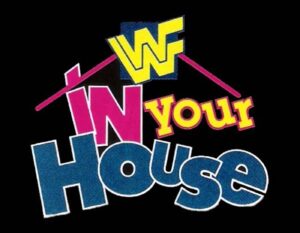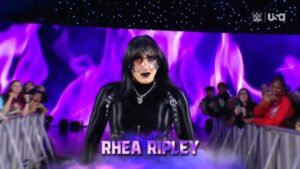Today the National Wrestling Alliance (NWA) announced it’s birthday, having been formed on June 18, 1948, changing the wrestling landscape forever. Today, the NWA turns 70.
On June 19th, 1948, The National Wrestling Alliance was founded.
This is our 70th Year!
We will celebrate.
You'll be a part of it.
So will be those who have held #TenPoundsOfGold.Stay Tuned! pic.twitter.com/VQ97IHMxSL
— NWA (@nwa) June 19, 2018
Wrestling’s Most Historic Organization Turns 70: The NWA
From the crowning of George Hackenschmidt as the first internationally recognized World Heavyweight Champion in professional wrestling in 1905, pro wrestling began to see a rise in attendance and popularity throughout the decades. But as the demand for more wrestling arose, from state to state, country to country, promotions began to anoint their own “World Champions” – there was a New York World Championship, held by the likes of Ed “Strangler” Lewis and Joe Stecher, a Boston World Championship held by Danno O’Mahoney, Charlie Cutler‘s Omaha World Championship and a Los Angeles World Championship around Jim Londos‘ waist. By the 1940s, it was becoming oversaturated with World Champions and promotions were constantly undercutting each other to promote their own World Champions over other wrestlers and promotions.

In St. Louis, promoter Sam Muchnik had a plan. Incorporating the framework set up by the infamous Gold Dust Trio (Joseph “Toots” Mondt, Ed “Strangler” Lewis and Billy Sandow) in the 1920s (that essentially established the industry of pro wrestling as we know it), he organized a collective of like minded promoters around the country who would jointly recognize one agreed upon World Heavyweight Champion. Muchnik joined forces with Iowa’s P.L. “Pinkie” George, Kansas City’s Orville Brown, Chicago’s Tony Stetcher, and Ohio’s Al Haft and Harry Light, leading to the formation of a governing board of directors for these united territories, called the National Wrestling Alliance. Several weeks after their foundation, it was agreed that Orville Brown – who was still an active wrestler (and 11x Ohio World Champion) – would assume the mantle as the NWA’s first World Heavyweight Champion. It was decreed that as new territories were brought into the National Wrestling Alliance, the World Heavyweight Champion would have unification title matches, absorbing them all into one undisputed NWA World Heavyweight Champion.

After 501 days as NWA World Champion, Orville Brown was ready to start unifying titles, and his next opponent was another NWA World Champion. This NWA was actually the National Wrestling Association out of New Orleans, which was founded in 1930, and their World Champion was a young shooter named Lou Thesz. Sadly, just before the unification match, Brown suffered a career-ending injury in a car crash and had to forfeit the title. Lou Thesz was awarded the title, unifying both into one World title. Thesz would hold the title from 1949 until 1956 (2300 days), conquering the territories and unifying the National Wrestling Alliance like no one before or after him – he defeated Gorgeous George for the Boston World title in 1950 and Baron Michele Leon for the Los Angeles World title in 1952, removing two of the biggest rival World titles and absorbing them into the NWA’s. Throughout the 1950s and 1960s, more promoters joined with the National Wrestling Alliance, including Don Owen (Pacific Northwest/Oregon), Frank Tunney (Maple Leaf Wrestling/Toronto), Bob Geigel (Central States/Kansas), Fritz Von Erich (Big Time Wrestling (WCCW)/Texas), Wally Karbo (Minnesota), Eddie Graham (Florida), Stu Hart (Wildkat (Stampede)/Calgary), Roy Shire (San Francisco), Gene Lebelle (Los Angeles), Dory Funk Sr. (Texas), Joe Blanchard (San Antonio), Jim Crockett (Mid Atlantic/Carolinas), Vince McMahon Sr. and Toots Mondt (Capitol Wrestling (WWE)/New York), Jim Barnett (Georgia), and internationally with Giant Baba (All Japan) and Steve Rickard (New Zealand & Australia).

Title disputes would eventually begin to rise their ugly heads, leading to splinter promotions leaving the Alliance. After Edouard Carpentier‘s win over Lou Thesz in 1957 was overruled (Thesz withdrew mid match due to injury, but the NWA ruled a title couldn’t change due to injury), Los Angeles’ Worldwide Wrestling Associates (WWA) withdrew recognition and crowned Carpentier the first WWA World Heavyweight Champion (WWA would fold in 1968). In 1960, Verne Gagne was also slighted out of a title, causing Wally Karbo to withdraw from the National Wrestling Alliance and together with Gagne, start the American Wrestling Association (AWA) that same year, with Gagne as the first AWA World Heavyweight Champion. In 1963, NWA World Champion “Nature Boy” Buddy Rogers was defeated by Lou Thesz, but New York’s Vince McMahon Sr. and Toots Mondt refused to acknowledge the change, and instead withdrew Capitol Wrestling – now the World Wide Wrestling Federation (WWWF) – from the National Wrestling Alliance and crowned Rogers the inaugural WWWF World Champion. Despite losing these three promotions from the alliance, the NWA continued to thrive, and the NWA World Heavyweight Championship was still considered the most prestigious World title in the sport.

Throughout the 1970s, the NWA continued to be the standard bearer, with World Champions like Harley Race, Dusty Rhodes and Terry Funk wearing the Ten Pounds of Gold. By the end of the 1970s, even the WWWF had returned to the fold, with the WWWF World Championship reduced to a regional WWWF Championship status during Bob Backlund‘s first run. By by the time the 1980s came along, the game changed. Despite New York returning, National Wrestling Alliance’s territories in big markets like California, Texas and Michigan were drying up. And then the shockwave that affected the entire pro wrestling world happened – Vince McMahon Jr. entered the game.

In 1982, Vince McMahon Sr. was ailing in health, and finally sold his company to his son, Vince Jr., who had been working for him for some years. Vince Jr. withdrew the WWWF, now rebranded as the World Wrestling Federation (WWF), from the NWA and turned to the new technology of cable television to ignore territorial boundaries and take the WWF national (and international). With the National Wrestling Alliance’s territorial life blood draining, some promotions sold to Vince Jr. – like Georgia Championship Wrestling, Maple Leaf Wrestling and Stampede Wrestling. Others, like Fritz Von Erich’s Big Time Wrestling, withdrew from the NWA and attempted to go out on their own, rebranding as World Class Championship Wrestling (WCCW). Others, attempted to join other promotions, such as Memphis’ Continental Wrestling Association (CWA), who joined with AWA in 1986.

Determined to keep the NWA spirit alive, Jim Crockett Jr. (who had taken over his father’s Mid Atlantic territory in 1973) began to acquire control of the remaining National Wrestling Allliance territories. He absorbed Championship Wrestling From Florida, Mid South Wrestling (which had tried to branch out on their own as the Universal Wrestling Federation (UWF) and failed), as well as promotions in Oklahoma and Kansas. It was Crockett’s tightening of his Mid Atlantic talent – lead by NWA World Champion “Nature Boy” Ric Flair – that actually drove Canadian promotions like Maple Leaf and Stampede into the WWF’s arms. Crockett limited the dates that Flair would appear for them and essentially stopped most of his talent from appearing for either promotion. Without the NWA’s biggest stars, the promotions had no choice but enter into alliance with Vince McMahon Jr. And while Crockett was the NWA President in the 1980s and often referred to his promotion, Jim Crockett Promotions (JCP) as the NWA during the decade, the actual NWA was very much a separate body. By 1988, Crockett was bankrupt, and sold the company to Ted Turner, the owner of the TBS Superstation that had housed the NWA program, World Championship Wrestling. Once under Turner’s ownership, JCP was renamed WCW (after the show), but remained in alliance with the NWA. In 1993, WCW finally withdrew from the NWA.

The 1990s and 2000s were lean years for the NWA. No longer did they have the world’s greatest wrestlers under its banner – WWF was too far ahead in the mainstream and WCW was picking up steam faster than NWA could replace it’s dwindling membership. In many people’s eyes, the final nail in the coffin of the NWA of old was when a performer named Shane Douglas with NWA affiliate Eastern Championship Wrestling won the World title in a tournament (the very tournament to crown the new Champion following WCW’s departure with World Champion Ric Flair) and instead of embracing the NWA and leading it to new pastures, took it out back behind the barn and put a bullet in its head. It was that night that Douglas threw down the belt and declared himself the new ECW World Champion – and that ECW was rebranding as Extreme Championship Wrestling (and withdrawing from the NWA).
For much of the 1990s, the NWA relied on an emerging combat sports star and UFC Champion Dan “The Beast” Severn to carry its legacy. With UFC emerging from the underground into the pop culture zeitgeist, Severn’s name attached to the NWA World Championship gave it back an air of legitimacy not seen since the days of Lou Thesz or Harley Race – that the champion was a legit ass kicker. During Severn’s reign, the NWA briefly reformed an alliance with the WWF, but it was short lived.

In 2002, the NWA title lineage got a reboot, when they entered into agreement with upstart promotion Total Nonstop Action (TNA), a new promotion founded by CWA’s Jerry Jarrett and his son, former WCW World Champion Jeff Jarrett. For five years, the NWA history was promoted and continued through TNA, with names like Jeff Jarrett, AJ Styles, Raven, Christian and Sting wearing the NWA gold. But in 2007, TNA split from the NWA to create their own titles, and suddenly it was WCW all over again.

Since then, the NWA has continued to rebuild, joining together indie promotions around the world. Emerging indie stars like Colt Cabana and Adam Pierce would have wars over the ten pounds of gold, while it also found champions in Mexico’s Blue Demon Jr. and Japan’s Hiroyoshi Tenzan. The NWA was surviving, but it was a far cry from its heydays of old. New upstart promotions like Ring of Honor, Pro Wrestling Guerrilla (PWG), CHIKARA, and more were pulling the top youth of the indie circuits, and the NWA was seen as a ghost of a different time. But the ten pounds of gold continued to remain the cornerstone of the alliance and a symbol of excellence to many fans around the world.

By 2012, the rights to the NWA were controlled by R. Bruce Tharpe. He had acquired them from Robert Trobich that year, ending Trobich’s 23-year run as owner of the alliance. Tharpe continued to rebuild the NWA, but last year he decided it was time for new life, new blood. And that’s when Billy Corgan stepped into the picture.

Billy Corgan had just left professional wrestling, having been somewhat unceremoniously ousted from ownership of TNA after several battles with former owner Dixie Carter. TNA was ultimately sold to Anthem Entertainment and rebranded Impact Wrestling, but Corgan’s passion for pro wrestling refused to wain. Partnering with Dave Laguna (who has worked in creative with both WWE and TNA, as well as producing Ring of Honor), the two purchased the rights to the NWA and relaunched it last year. They created a web series entitled Ten Pounds of Gold that was both reflective and respectful of the great legacy the NWA has held in the past 70 years, but also unabashedly and excitingly looking forward. The current NWA World Heavyweight Champion Nick Aldis (formerly Magnus in TNA) has been defending his title around the world in multiple promotions, from the US to the UK to China. In just the past few months, Aldis has competed for CZW, House of Hardcore, IPW:UK, Championship Wrestling From Hollywood, MCW Pro, and Ring of Honor, all under the National Wrestling Alliance banner as World Champion. He’s even slated to compete at the indie supershow ALL IN this September, defending the NWA World title against Cody Rhodes.

The NWA was an instrumental organization, that unified and helped establish professional wrestling as a viable and believable construct. From it’s inaugural days in the late 1940s, through the early days of the television in the 1950s, the wild 60s and through the warzones of the 1970s, the National Wrestling Alliance created a standard that every promotion today continues to live up to. And while it saw its shine dim for brief spells, the brand is finally back on the path of acceptance once again. Working hand in hand with some of the top independent promotions around the world, the National Wrestling Alliance is once again a unifying presence in pro wrestling, the way it was always intended.
Happy 70th birthday, National Wrestling Alliance. It’s nice to have you back.
Stay tuned to the Last Word on Pro Wrestling for more on this and other stories from around the world of wrestling, as they develop. You can always count on LWOPW to be on top of the major news in the wrestling world, as well as to provide you with analysis, previews, videos, interviews, and editorials on the wrestling world. And subscribe to the NWA YouTube channel to watch the promotion






